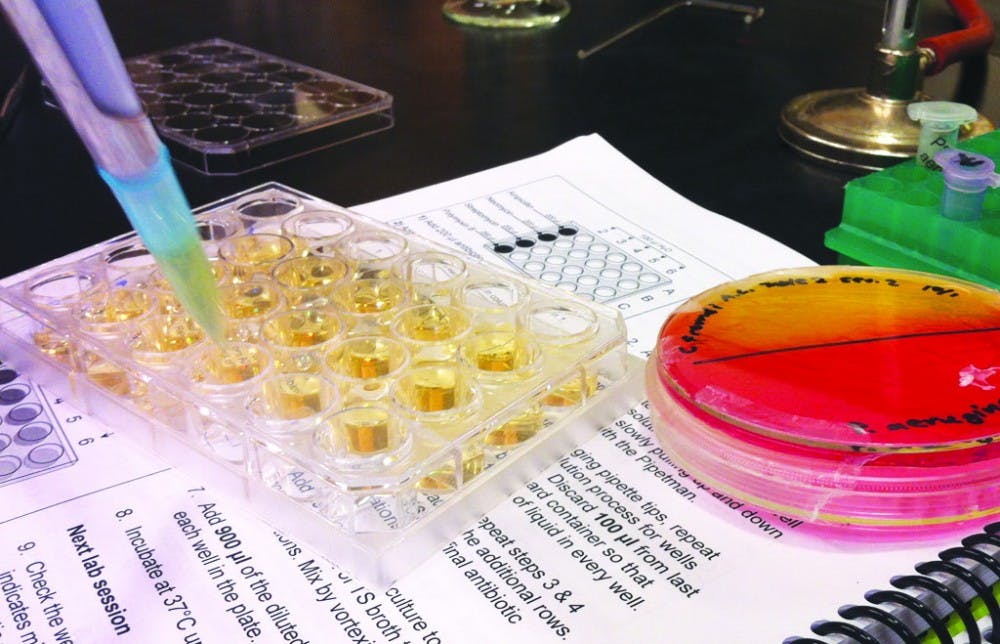Antibiotics kill off most, but not all, of a target bacteria. A team of scientists set out to explain why a select group of bacteria survive.
The researchers at Duke and other universities found that when a phosphate group attaches itself to the bacterial protein HipA, bacterial cells containing the protein gain tolerance to antibiotic drugs.The study was published in the September issue of Cell Reports. By studying the proteins involved in drug tolerance, researchers may be able to glean solutions to eradicate bacterial diseases such as tuberculosis and cystic fibrosis.
The researchers observed the addition of a phosphate group to a protein—a process called phosphorylation—which changes the shape of the HipA protein, thereby putting it in a dormant state that antibiotics do not target.
“Before conducting this study, we hypothesized that HipA phosphorylation induces protein activation and persistence,” said Kim Lewis, director of Antimicrobial Discovery Center at Northeastern University and co-author of the study. “What we found was completely unexpected. Our results showed that [HipA] auto-phosphorylation leads to HipA inactivation and multi-drug tolerance.”
Lewis noted that multi-drug tolerance is not the same phenomenon as multi-drug resistance.
Resistance is an active process in which a cell tries to prevent antibiotics from hitting their targets, Lewis said. Resistance can take the form of bacteria producing enzymes that modify or cleave antibiotics.
Multi-drug tolerance, on the other hand, involves dormant cells called persisters that bacteria produce as an internal survival mechanism, said Richard Brennan, professor of biochemistry and co-author of the study. Antibiotics are far less effective in tagging dormant bacteria—this is why tuberculosis and E. coli are difficult to eradicate.
To pinpoint structural mechanisms at work in HipA-mediated multi-drug tolerance, researchers used x-ray crystallography to produce three-dimensional images of HipA’s conformation before and after auto-phosphorylation, Brennan said.
“We didn’t realize what intense gymnastics this protein had to go through in order to become phosphorylated,” Brennan said. “With the addition of a single phosphate group, internal amino acid chains were ejected outwards and external amino acid chains inwards. We were completely surprised by how flexible these proteins can be.”
Because of the drastic conformational change in HipA, kinase inhibitors may be a possible treatment method for multi-drug tolerant diseases such as tuberculosis and cystic fibrosis, Brennan noted.
Both Brennan and Lewis agreed that discovering potential downstream targets of HipA is the first step to developing these therapeutic drugs.
“We are currently trying to identify HipA targets and compare our results from in vitro studies with results from in vivo studies,” Brennan said. “With this data, we could understand exactly how HipA limits activity of other molecules and [pinpoint] the biochemical pathway involved in regulating cell dormancy.”
Lewis wants to take this research one step further and examine how bacterial cells transition from dormancy to normalcy.
“We now understand how HipA inhibits itself,” Lewis said. “But in addition to treating multi-drug tolerant diseases, we want to eradicate them. To accomplish this goal, we must first understand the biomechanics involved in converting dormant bacterial cells to normal.”
Get The Chronicle straight to your inbox
Sign up for our weekly newsletter. Cancel at any time.

